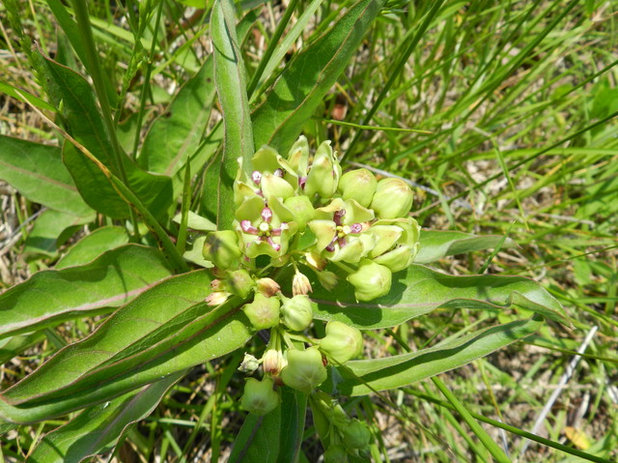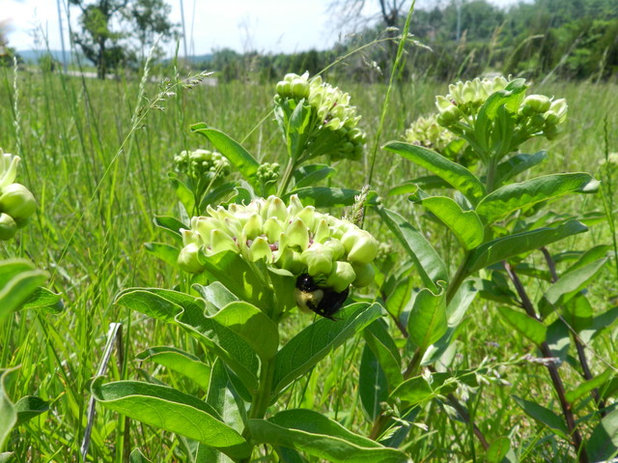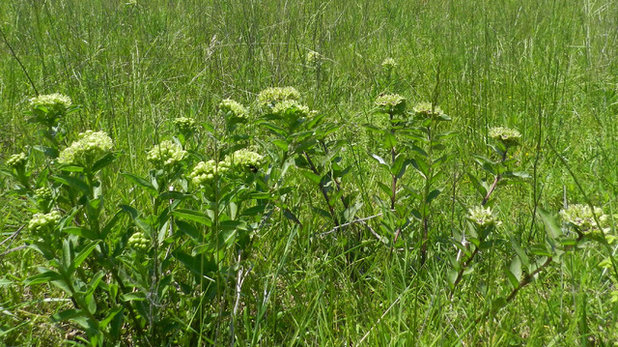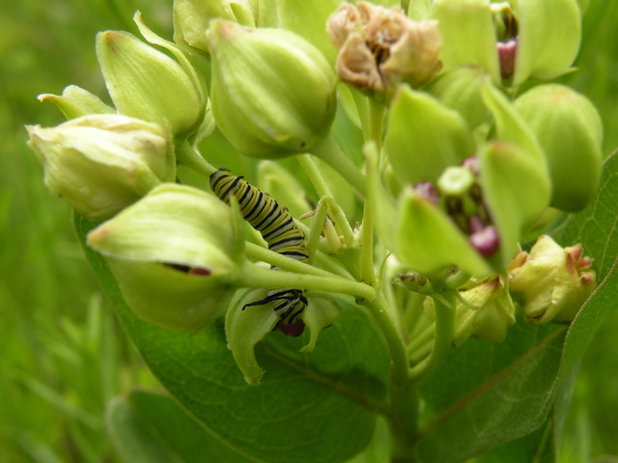There are around 100 milkweed species native to North America. While you might be familiar with the somewhat aggressive common and showy milkweeds (
Asclepias syriaca and
A. speciosa), as well as the popular butterfly milkweed (
Asclepias tuberosa) and swamp milkweed (
Asclepias incarnata), there are so many more species we could be using — a milkweed for any location.
Green antelopehorn (
Asclepias viridis), also called spider milkweed, won’t disappoint. It’s adaptable, drought-tolerant, short and well-behaved. This unique-blooming milkweed native to the central and southern U.S. is perfect for a naturalistic setting in the landscape.
Caution: All parts of this plant are poisonous.

Aubrey James Shepherd
Botanical name: Asclepias viridisCommon name: Green antelopehorn, spider milkweed, green milkweed
Origin: Native to the central and southern Great Plains, from Nebraska east to Ohio and West Virginia, and from there south to Florida and west to Texas
Where it will grow: Hardy to minus 20 degrees Fahrenheit, or minus 29 degrees Celsius (USDA zones 5 to 9; find your zone); part of the tallgrass and mixed-grass prairie eco-regions
Typical plant communities: Meadow and prairie
Water requirement: No supplemental water needed once established; prefers dry to medium soil
Light requirement: Full sun
Mature size: 1 foot to 2 feet tall and wide
Benefits and tolerances: Adaptable and resilient prairie native; can grow in a variety of soil conditions; pollinator plant; nonaggressive; monarch host plant as well as a host for milkweed beetles, milkweed bugs, tussock moths and more
Seasonal interest: Early summer bloom, ahead of most other milkweeds, followed by the common ornamental seedpods
When to plant: Plant potted or bare-root plants in spring to early fall; sow seeds in late fall through midwinter

Aubrey James Shepherd
Distinguishing traits. Green antelopehorn is among the shorter milkweed species. The leaves tend to curl, cup or be generally wavy, as can be seen in this image.
It’s also an early-blooming milkweed, with flowers appearing anytime from late spring to early summer — something to consider if you’re looking for bloom succession among various milkweed species. And what about those flowers? Elegant in their subtle simplicity, they provide something unique for gardeners and pollinators alike.

Aubrey James Shepherd
How to use it. With a height of 1 foot to 2 feet, green antelopehorn looks best planted in the front of a border or among shorter plants, where its blooms can rise above the rest.
One plant will often produce just one flower stalk — but don’t expect to see flowers for a few years while it spends all of its energy making a deep taproot.

Aubrey James Shepherd
Planting notes. Plant in dry, well-drained soil, preferably a sandy, rocky or clay-loam soil. Green antelopehorn is quite drought-tolerant once established, making it ideal for harsh conditions on a slope or plain in full summer sun, but you’ll see it growing in a variety of conditions. This is not an aggressive milkweed at all.
It prefers less competition, so avoid planting anything much taller than 2 feet around it, and don’t crowd it in general. Green antelopehorn looks best among airy shortgrasses such as little bluestem (
Schizachyrium scoparium) and sideoats grama
(
Bouteloua curtipendula), or any number of adaptable native sedges (
Carex spp.).
It is quite attractive to monarch butterflies — can you see the young caterpillars in this image?





